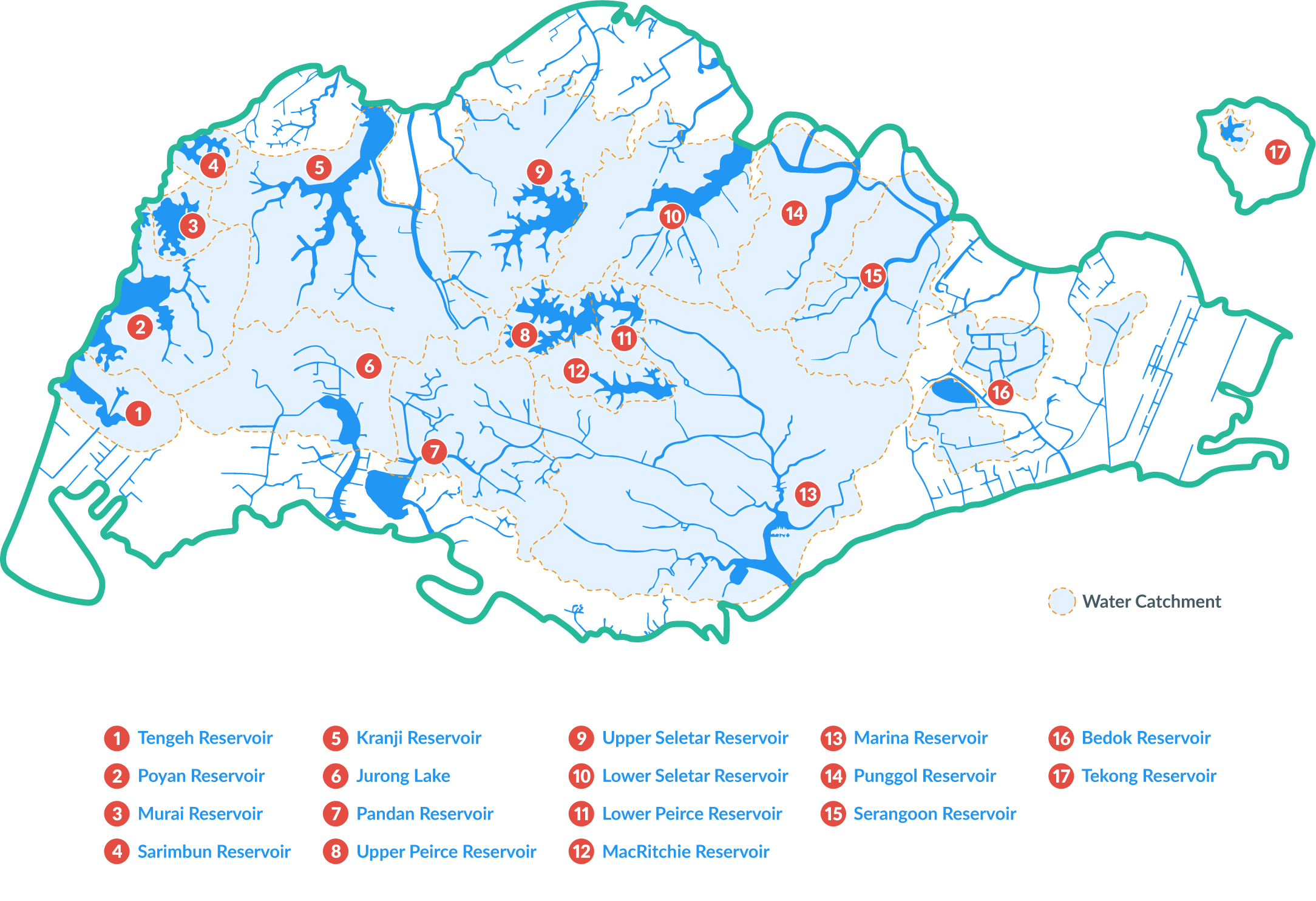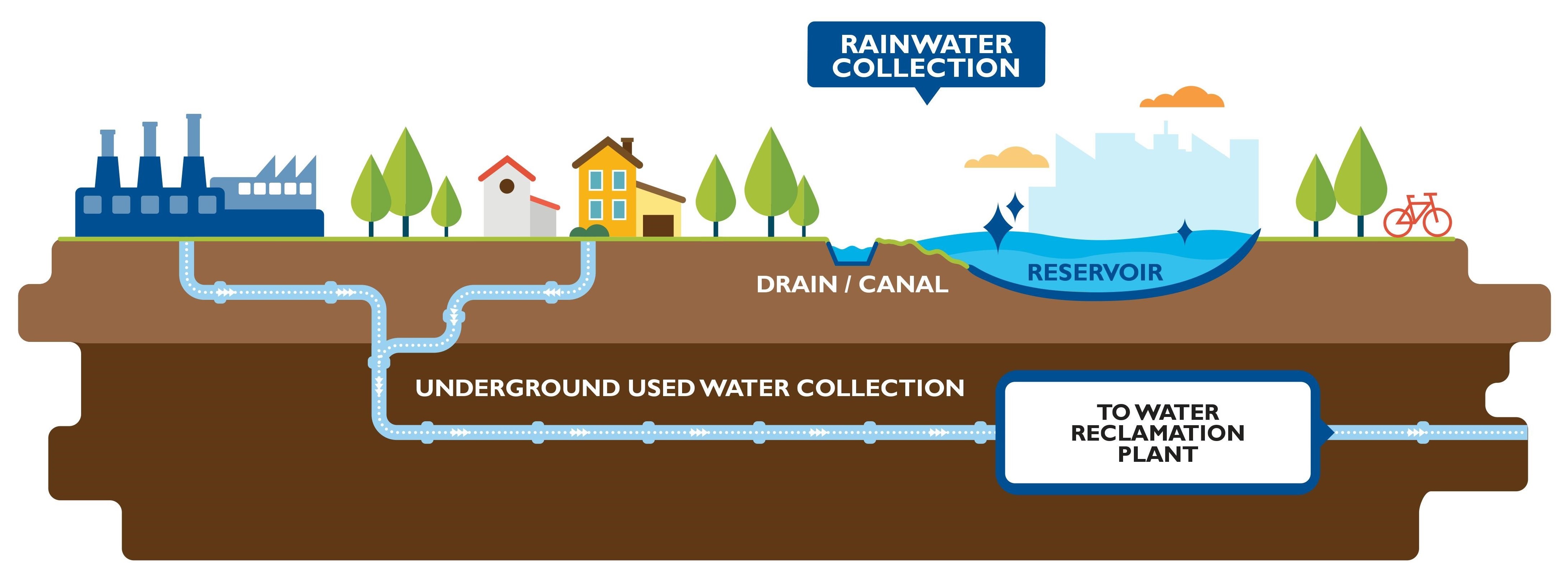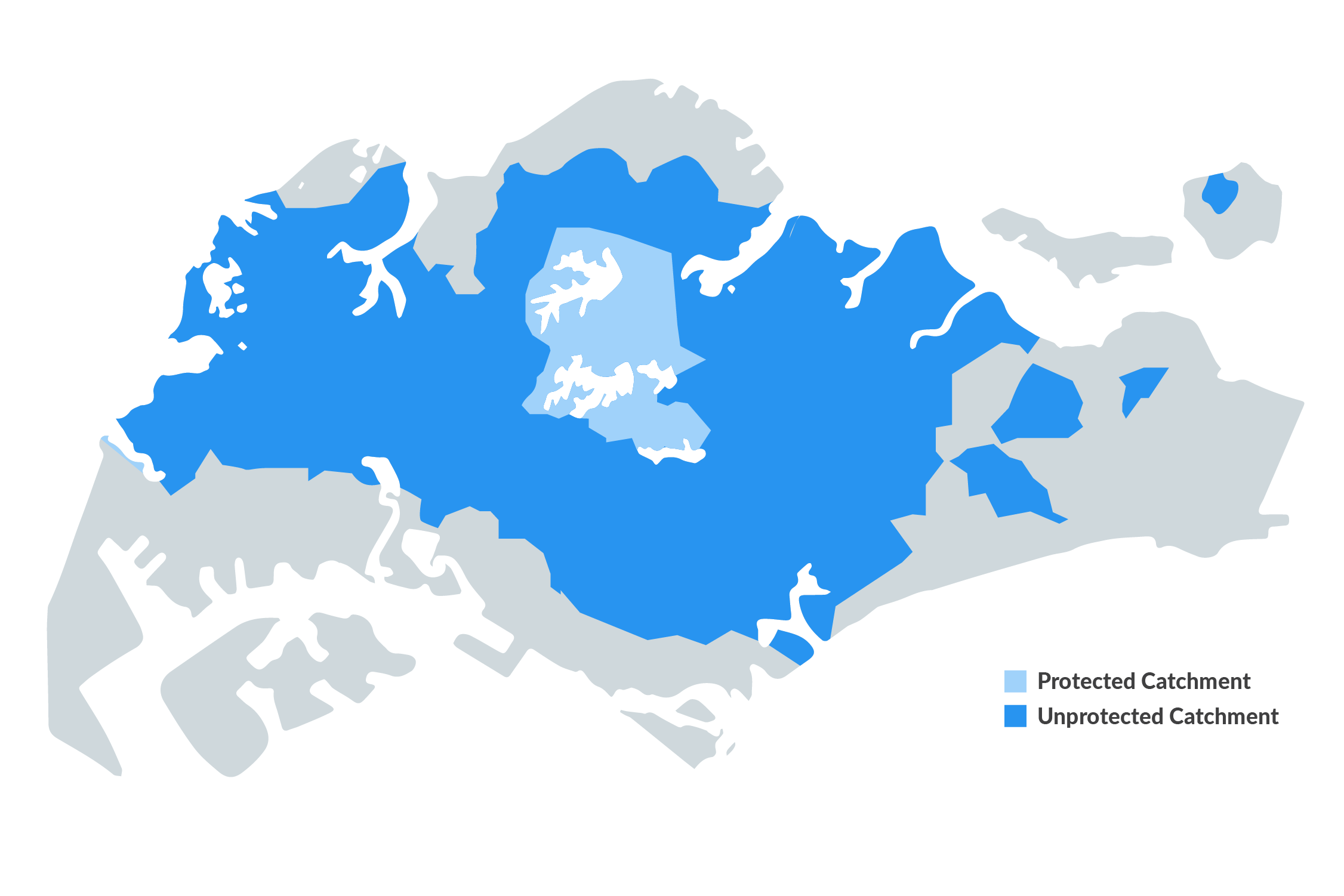With an area of about 710 km2 and growing urban areas, Singapore lacks the space to collect and store all the rain that falls on it. Through a network of rivers, canals and drains, rain that falls on two-thirds of Singapore's land area is channelled to our 17 reservoirs.
View enlarged version >>
Two Separate Collection Systems
Singapore has two separate systems to collect rainwater and used water.
1. Rainwater is collected through a comprehensive network of drains, canals and rivers and channelled to the reservoirs before it is treated for drinking water.
2. Used water is collected in a network of underground sewers that lead to a water reclamation plant. Separate systems ensure that the waterways are free of pollution.
View enlarged version >>
Harnessing Reservoirs and Rivers
Since 2011, the water catchment area has increased from half to two-thirds of Singapore’s land surface with the completion of the Marina, Punggol and Serangoon Reservoirs. This makes Singapore one of the few countries in the world to harvest urban stormwater on a large scale for potable consumption.
PUB continues to explore ways to maximise our rainwater collection yield and strives to collect every drop of water that falls on Singapore.
For more information on the development of local catchments, please click
here [PDF].

Tracking Water Quality
PUB actively tracks the raw water quality in its reservoirs through sampling and online sensors. Regular water quality tests are also conducted on the raw reservoir water.
